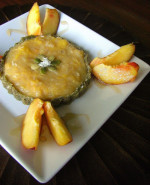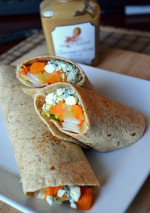A few months ago I became involved with one2one Network and was sent a copy of Dr. Harvey Karp’s new book, The Happiest Baby Guide to Great Sleep: Simple Solutions For Kids From Birth to Five Years.
Dr. Karp is well known for The Happiest Baby on the Block and The Happiest Toddler on the Block. I was excited to review this book since I had to read The Happiest Baby on the Block for my first baby. I was having problems getting her to rest and sleep and then I realized she had lots of colic. I did not know how to calm her despite those symptoms. The techniques and suggestions written by this nationally celebrated pediatrician worked most of the time so I was happy to read this new book to see how I could help my toddler sleep better and to get more information in case I started having more sleep issues with my second baby.
Right off the bat I learned a lot with The Happiest Baby Guide to Great Sleep. It gave me greater insight on the typical sleep cycles that babies and toddlers go through as well as the different stages of sleep that babies go through. We have all heard about REM, but have you ever heard of NREM? NREM is the most restful sleep where the eyelids are still whereas REM deals with lighter sleep and the eyelids flutter and move.
Light sleep and deep sleep happens all through the night with an infant. It was fascinating getting all the inside information on my little one. I have loved focusing on her eyelids as she drifts off. I even get a small smile and have even gotten some laughter!
There is another chapter in this book where Dr. Karp focuses on the 5 S’s: Five Ways to Turn on the Calming Reflex. These are the five steps that he talked about in the first book I read. It focused on swaddling, placing baby on the side, shushing, swinging and sucking.
I love swaddling because I had always read, even in this book, that there is a fourth trimester. The baby needs to feel safe, secure and snuggled. Their reflexes are not controlled. I LOVE seeing my newborn flail her arms when something alarms her. It was also written that a baby feels like they are falling when they flail their arms out that way. My newborn has started crying several times after something or someone startled her. Swaddling is therefore encouraged even until 6 months. He also focuses on a section when to wean an infant from swaddling.
Another chapter talks about the dangers of co-sleeping and bed-sharing. While I agreed on the dangers, I knew how hard I had it with my first baby. When I had my mother-in-law stay with us for a month, I happened to mention to her that I felt a lot more rested with this baby than with the first. We then realized that it was because I was bed-sharing. The baby would sleep with both of us in bed and whenever she woke up I would feed her and she would fall back asleep. Granted my sleep was not quite as deep because I was aware of her presence. We had our first baby in a bassinet in our room when she was first born. I felt so exhausted because I was getting up every time, and very often, when she cried or need to be fed, despite being swaddled.
We have only co-shared the first 6 weeks and now we are implementing Dr. Karp’s points for great sleep. Another beautiful and helpful tip were all the charts he included in a lot of chapters showing the sleep cycle of a typical newborn and toddler. They are pretty much on target.
Kathleen, our second born child, falls asleep for the night at 9:30pm. Even though, I should wake her up around 11pm or 12am for a last feed for the night, according the Dr. Karp’s pointers, she really does not wake up for me so I let her sleep until she wakes up for her “dream feed” at around 2am or 3am. She then sleeps until 6 or 7 am. I feel like I have a great sleeper! Before I put her to bed, I make sure she is awake so she can lull herself to sleep. So far she has been doing really well.
How has this new book helped me to understand my toddler’s sleep schedule? Julianne is 17 months old and I have found that every day is a new day when it comes to naps. Some days she will have 2 naps or 1 nap, but then some days she will boycott both. I figure some of that has to do with her teething and sometimes it has to do with being a spirited and passionate toddler. She takes after me. I love the fact that Dr. Karp describes different types of personalities that toddlers have. I might has one spirited child and a quiet spirited baby. We’ll see.
I might be in denial, but Dr. Karp has charts showing when most toddlers go from 2 to 1 to 0 naps. He even states how every day might be different which is what I think we go through in our household. Julianne is such a high energy toddler that if she had it her way, she would never sleep. She does not want to miss any events or activities around her. I have tried a technique that the Dr. talks about which is to go outdoors before the first nap. Our family likes the outdoors which is not a problem. Julianne goes to the front door often and exclaims “OUT!” Sometimes it helps her take her first nap and other times it continues to give her energy until after lunch.
The best thing I took from the book is Chapter 10 where Dr. Karp talks about “Six Fun Steps to Boost Patience and Cooperation”. Whew, this is much needed in our home now. Even though I have the sweetest toddler, patience is lacking. I know it comes with age but some days it is hard having her just WAIT. Mornings are usually the most trying cause she wakes up so hungry. EAT! She has lots of words and EAT is the most important to her throughout the day. She gets impatient waiting for her fruit and cereal. Even though the cereal is prepared in advance I am just not quick enough for her. Ha!
The six steps that the Dr. talks about has help me better communicate with Julianne. Even though she is still young it is AMAZING how much she understands but it all depends how I communicate with her. Shorter phrases with simple words will help her understand and it has. I try to understand the feelings. There are other steps that will continue to help as Julianne get older.






